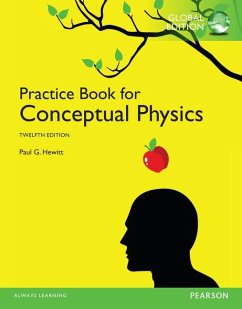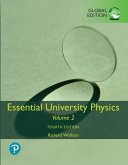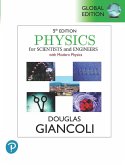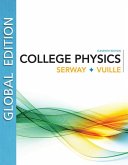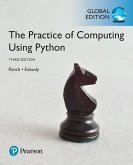Paul Hewitt
Practice Book for Conceptual Physics, The, Global Edition
Paul Hewitt
Practice Book for Conceptual Physics, The, Global Edition
- Broschiertes Buch
- Merkliste
- Auf die Merkliste
- Bewerten Bewerten
- Teilen
- Produkt teilen
- Produkterinnerung
- Produkterinnerung
This book is filled with computational exercise, misconception-busting questions, analogies, and straightforward practice questions and problems that help students â tie it all together.â
Andere Kunden interessierten sich auch für
![Essential University Physics, Volume 2, Global Edition Essential University Physics, Volume 2, Global Edition]() Richard WolfsonEssential University Physics, Volume 2, Global Edition74,99 €
Richard WolfsonEssential University Physics, Volume 2, Global Edition74,99 €![Physics for Scientists & Engineers with Modern Physics, Global Edition Physics for Scientists & Engineers with Modern Physics, Global Edition]() Douglas GiancoliPhysics for Scientists & Engineers with Modern Physics, Global Edition74,09 €
Douglas GiancoliPhysics for Scientists & Engineers with Modern Physics, Global Edition74,09 €![College Physics, Global Edition College Physics, Global Edition]() Raymond Serway (James Madison University (Emeritus) )College Physics, Global Edition117,99 €
Raymond Serway (James Madison University (Emeritus) )College Physics, Global Edition117,99 €![Conceptual Integrated Science, Global Edition Conceptual Integrated Science, Global Edition]() Paul HewittConceptual Integrated Science, Global Edition93,99 €
Paul HewittConceptual Integrated Science, Global Edition93,99 €![Cultural Landscape: An Introduction to Human Geography, The, Global Edition Cultural Landscape: An Introduction to Human Geography, The, Global Edition]() James RubensteinCultural Landscape: An Introduction to Human Geography, The, Global Edition119,99 €
James RubensteinCultural Landscape: An Introduction to Human Geography, The, Global Edition119,99 €![Art and Science of Leadership, The, Global Edition Art and Science of Leadership, The, Global Edition]() Afsaneh NahavandiArt and Science of Leadership, The, Global Edition88,99 €
Afsaneh NahavandiArt and Science of Leadership, The, Global Edition88,99 €![Practice of Computing Using Python, The, Global Edition Practice of Computing Using Python, The, Global Edition]() William PunchPractice of Computing Using Python, The, Global Edition109,99 €
William PunchPractice of Computing Using Python, The, Global Edition109,99 €-
-
-
This book is filled with computational exercise, misconception-busting questions, analogies, and straightforward practice questions and problems that help students â tie it all together.â
Hinweis: Dieser Artikel kann nur an eine deutsche Lieferadresse ausgeliefert werden.
Hinweis: Dieser Artikel kann nur an eine deutsche Lieferadresse ausgeliefert werden.
Produktdetails
- Produktdetails
- Verlag: Pearson Education Limited
- 12 ed
- Seitenzahl: 212
- Erscheinungstermin: 19. März 2015
- Englisch
- Abmessung: 273mm x 212mm x 14mm
- Gewicht: 502g
- ISBN-13: 9781292057149
- ISBN-10: 1292057149
- Artikelnr.: 53690736
- Herstellerkennzeichnung
- Libri GmbH
- Europaallee 1
- 36244 Bad Hersfeld
- gpsr@libri.de
- Verlag: Pearson Education Limited
- 12 ed
- Seitenzahl: 212
- Erscheinungstermin: 19. März 2015
- Englisch
- Abmessung: 273mm x 212mm x 14mm
- Gewicht: 502g
- ISBN-13: 9781292057149
- ISBN-10: 1292057149
- Artikelnr.: 53690736
- Herstellerkennzeichnung
- Libri GmbH
- Europaallee 1
- 36244 Bad Hersfeld
- gpsr@libri.de
Paul G. Hewitt Former silver-medal boxing champion, sign painter, uranium prospector, and soldier, Paul began college at the age of 27, with the help of the GI Bill. He pioneered the conceptual approach to teaching physics at the City College of San Francisco. He has taught as a guest teacher at various middle schools and high schools, the University of California at both the Berkeley and Santa Cruz campuses, and the University of Hawaii at both the Manoa and Hilo campuses. He also taught for 20 years at the Exploratorium in San Francisco, which honored him with its Outstanding Educator Award in 2000. He is the author of Conceptual Physics and a co-author of Conceptual Physical Science and Conceptual Physical Science Explorations (with John Suchocki and Leslie Hewitt).
1. About Science
I. MECHANICS
2. Newton’s First Law of Motion: Inertia
3. Linear Motion
4. Newton’s Second Law of Motion: Force and Acceleration
5. Newton’s Third Law of Motion: Action and Reaction
6. Momentum
7. Energy
8. Rotational Motion
9. Gravity
10. Projectile and Satellite Motion
II. PROPERTIES OF MATTER
11. Atomic Nature of Matter
12. Solids
13. Liquids
14. Gases and Plasmas
III. HEAT
15. Temperature, Heat and Expansion
16. Heat Transfer
17. Change of Phase
18. Thermodynamics
IV. SOUND
19. Vibrations and Waves
20. Sound
21. Musical Sounds
V. ELECTRICITY AND MAGNETISM
22. Electrostatics
23. Electric Current
24. Magnetism
25. Electromagnetic Induction
VI. LIGHT
26. Properties of Light
27. Color
28. Reflection and Refraction
29. Light Waves
30. Light Emission
31. Light Quanta
VII. ATOMIC AND NUCLEAR PHYSICS
32. The Atom and the Quantum
33. Atomic Nucleus and Radioactivity
34. Nuclear Fission and Fusion
VIII. RELATIVITY
35. Special Theory of Relativity
36. General Theory of Relativity
Appendices
A. Systems of Measurement
B. More About Motion
C. Graphing
D. More About Vectors
E. Exponential Growth and Doubling Time
I. MECHANICS
2. Newton’s First Law of Motion: Inertia
3. Linear Motion
4. Newton’s Second Law of Motion: Force and Acceleration
5. Newton’s Third Law of Motion: Action and Reaction
6. Momentum
7. Energy
8. Rotational Motion
9. Gravity
10. Projectile and Satellite Motion
II. PROPERTIES OF MATTER
11. Atomic Nature of Matter
12. Solids
13. Liquids
14. Gases and Plasmas
III. HEAT
15. Temperature, Heat and Expansion
16. Heat Transfer
17. Change of Phase
18. Thermodynamics
IV. SOUND
19. Vibrations and Waves
20. Sound
21. Musical Sounds
V. ELECTRICITY AND MAGNETISM
22. Electrostatics
23. Electric Current
24. Magnetism
25. Electromagnetic Induction
VI. LIGHT
26. Properties of Light
27. Color
28. Reflection and Refraction
29. Light Waves
30. Light Emission
31. Light Quanta
VII. ATOMIC AND NUCLEAR PHYSICS
32. The Atom and the Quantum
33. Atomic Nucleus and Radioactivity
34. Nuclear Fission and Fusion
VIII. RELATIVITY
35. Special Theory of Relativity
36. General Theory of Relativity
Appendices
A. Systems of Measurement
B. More About Motion
C. Graphing
D. More About Vectors
E. Exponential Growth and Doubling Time
1. About Science
I. MECHANICS
2. Newton’s First Law of Motion: Inertia
3. Linear Motion
4. Newton’s Second Law of Motion: Force and Acceleration
5. Newton’s Third Law of Motion: Action and Reaction
6. Momentum
7. Energy
8. Rotational Motion
9. Gravity
10. Projectile and Satellite Motion
II. PROPERTIES OF MATTER
11. Atomic Nature of Matter
12. Solids
13. Liquids
14. Gases and Plasmas
III. HEAT
15. Temperature, Heat and Expansion
16. Heat Transfer
17. Change of Phase
18. Thermodynamics
IV. SOUND
19. Vibrations and Waves
20. Sound
21. Musical Sounds
V. ELECTRICITY AND MAGNETISM
22. Electrostatics
23. Electric Current
24. Magnetism
25. Electromagnetic Induction
VI. LIGHT
26. Properties of Light
27. Color
28. Reflection and Refraction
29. Light Waves
30. Light Emission
31. Light Quanta
VII. ATOMIC AND NUCLEAR PHYSICS
32. The Atom and the Quantum
33. Atomic Nucleus and Radioactivity
34. Nuclear Fission and Fusion
VIII. RELATIVITY
35. Special Theory of Relativity
36. General Theory of Relativity
Appendices
A. Systems of Measurement
B. More About Motion
C. Graphing
D. More About Vectors
E. Exponential Growth and Doubling Time
I. MECHANICS
2. Newton’s First Law of Motion: Inertia
3. Linear Motion
4. Newton’s Second Law of Motion: Force and Acceleration
5. Newton’s Third Law of Motion: Action and Reaction
6. Momentum
7. Energy
8. Rotational Motion
9. Gravity
10. Projectile and Satellite Motion
II. PROPERTIES OF MATTER
11. Atomic Nature of Matter
12. Solids
13. Liquids
14. Gases and Plasmas
III. HEAT
15. Temperature, Heat and Expansion
16. Heat Transfer
17. Change of Phase
18. Thermodynamics
IV. SOUND
19. Vibrations and Waves
20. Sound
21. Musical Sounds
V. ELECTRICITY AND MAGNETISM
22. Electrostatics
23. Electric Current
24. Magnetism
25. Electromagnetic Induction
VI. LIGHT
26. Properties of Light
27. Color
28. Reflection and Refraction
29. Light Waves
30. Light Emission
31. Light Quanta
VII. ATOMIC AND NUCLEAR PHYSICS
32. The Atom and the Quantum
33. Atomic Nucleus and Radioactivity
34. Nuclear Fission and Fusion
VIII. RELATIVITY
35. Special Theory of Relativity
36. General Theory of Relativity
Appendices
A. Systems of Measurement
B. More About Motion
C. Graphing
D. More About Vectors
E. Exponential Growth and Doubling Time

